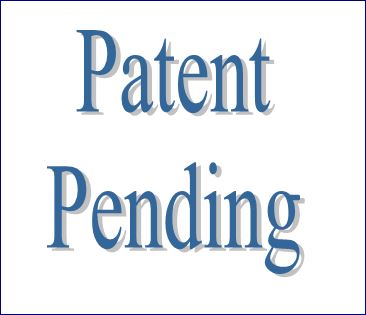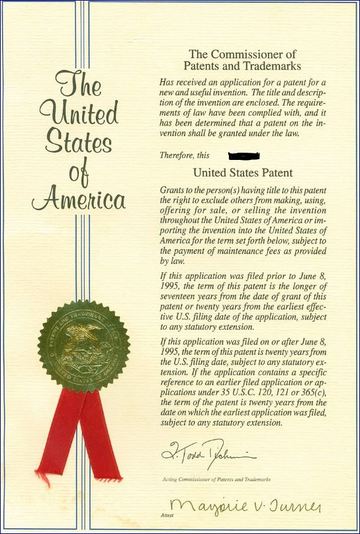|
Thomas Jefferson Thomas Jefferson was a pretty smart fellow. He fully understood the need for inventors of all stripes to have appropriate levels of protection for their invention, under the auspices of the federal government. The United States Patent and Trademark Office’s (USPTO) mission is derived from Article I, Section 8, Clause 8, of the Constitution, “to promote the progress of science and useful arts, by securing for limited times to authors and inventors the exclusive right to their respective writing and discoveries,” and the Commerce Clause of the Constitution (Article 1, Section 8, Clause 3) supporting the federal registration of trademarks. Attributed to Charles Duell, Patent Office Commissioner in 1899, the famous quote “everything that can be invented has been invented” has been disputed for some time. No matter who said it, it does remind us that humans are not exactly forward looking creatures. Mr. Duell didn’t understand air travel, jet airliners, telephones, and a million other amazing inventions that have occurred since he was commissioner. He would probably have called the local insane asylum to have you institutionalized if you had told him within 70 years, people will walk on the moon! Nevertheless, the USPTO is busier now than ever.
Even though it may not look like it, the USPTO is working very hard to reduce these numbers. For example, in 2011, the total pendency was 33.7 months! In just four years that was reduced to 26.6 months. Considering the amount of work involved, this is a tremendous achievement. For just the year 2015, (the last year we have for full data) there were 325,979 patents issued. As of April 2017, there is a backlog of 543,000 applications waiting for an examiner to touch. If you want to see how amazing our country is, think about these numbers for a minute. Every year, the number of issued patents grows. And every year the number of applications filed grows as well. There are a lot of smart people in the world who are working day and night to improve themselves and our society. What Does the Patent Office Actually Do? The patent office examines patent applications to determine whether the claimed invention is eligible for patent protection, is useful, is adequately disclosed, and is clearly defined. It also evaluates the claimed invention in comparison to a large body of technological information to determine whether it is novel and non-obvious. Patent examiners also respond to appeal briefs on applications appealed to the Patent Trial and Appeal Board (PTAB) and prepare preliminary examination reports for international applications filed under the Patent Cooperation Treaty (PCT). The patent process includes performing an administrative review of newly filed applications, publishing pending applications, issuing patents to successful applicants, and disseminating issued patents to the public. Worldwide Patent Usage
They have also been very busy in helping American inventors by protecting their inventions worldwide. The USPTO successfully transitioned to the Cooperative Patent Classification (CPC) system on January 1, 2015. They played a global leadership role in its early adoption and implementation. The CPC system was developed in partnership with the European Patent Office, and using it will help to improve access, increase efficiency, lower costs, and improve patent quality. The CPC system is designed to develop a common, internationally compatible classification system for technical documents used in the patent-granting process. It offers a more robust and agile classification system for both offices’ user communities and enables more technical documents to be classified because the USPTO and EPO are both entering documents into the system. Leading up to the changeover, throughout 2013 and 2014, numerous bilateral CPC events were held with external stakeholders, providing notice that the old USPC system would become a static document collection for utility patents after December 2014. Searching based on CPC provides a more comprehensive search result set that includes national documents from China and Korea, as well as other countries that classify their national documents into the CPC, documents that were not previously available for viewing or retrieval under the USPC. Another important international development in FY 2015 was the U.S. ratification of the Hague Agreement concerning the international registration of industrial designs. Critically important for American businesses and entrepreneurs, the treaty—this took effect on May 13, 2015—enables U.S. applicants pursuing protection for industrial designs to file a single application with either the USPTO or the World Intellectual Property Organization. USPTO also issued new rules for filing under the Hague Agreement, allowing for applicants to register a design in more than 60 territories with only one filing. Let’s Define a Patent? A patent is an intellectual property right granted by the government of the United States of America to an inventor “to exclude others from making, using, offering for sale, or selling the invention throughout the United States or importing the invention into the United States” for a limited time in exchange for public disclosure of the invention when the patent is granted. There are three types of patents: utility, design, and plant.
If you don’t happen to know a patent attorney, and this is a specialty that a regular attorney just cannot perform, you might consider hiring an independent person to handle the endless meetings and work involved on your behalf. This person, let’s just call them a consultant, probably knows a few highly regarded patent attorneys, and will work on your behalf to make the process go forward. Or you can spend endless amounts of your time handling the attorneys, the paperwork, and the stress. ----- Tidewater Capital Services is an international private investment firm based in Charlotte, North Carolina. We believe that the true economic value of every asset is realized over the long term. Often that means holding an investment for years. To capture the true economic value, we seek to invest our own capital where there is a high-growth potential business, run by intelligent, trustworthy founders. Our capital, along with our many decades of experience, will often be the difference between success and failure. We encourage you to review our equity investment criteria page for more information. Lee West - Founder & C.E.O., Tidewater Capital Services. -----
0 Comments
Your comment will be posted after it is approved.
Leave a Reply. |
AuthorMy name is Lee West. I help people develop their businesses into industry leaders so they can achieve their dreams. Thank you for reading. Archives |


 RSS Feed
RSS Feed